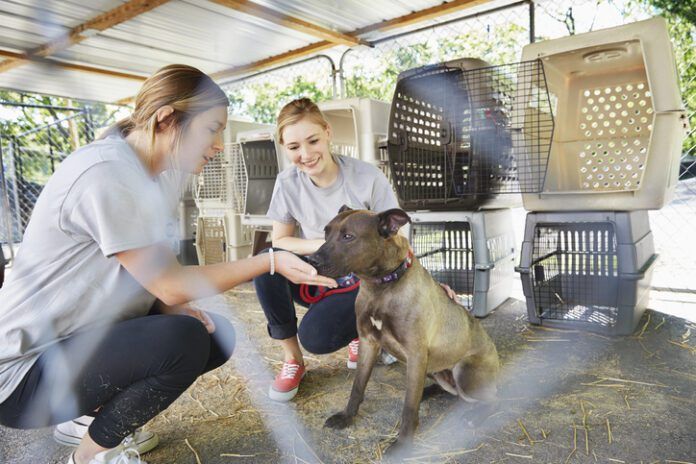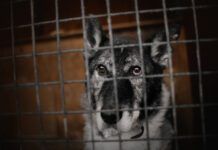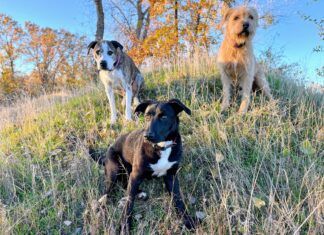The potential for the loss of liability insurance is closing shelter doors to volunteers.
As many of you know from personal experience, volunteers in animal shelters play an enormously valuable role in helping reduce the dogs’ stress and increase their quality of life in innumerable small ways. The end goal is always to make the dogs feel any small amount better, in hopes of improving their chances of connecting with a human who will adopt them and get them out of the shelter! The most impactful thing these volunteers can do is to get dogs out of their small pens to exercise, de-stress, eliminate in a more comfortable setting, socialize with humans and sometimes other dogs, escape the loud noise in their kennels (if only for a few minutes), and perhaps receive some instruction on basic “good manners” behaviors.
Even volunteers who can’t physically handle strong, excited, and untrained dogs can assist other volunteers or staff when dogs are taken outside by providing some spot cleaning, freshening the dogs’ bedding, and preparing food-stuffed frozen toys (and washing the previous days’ toys) for the dogs to enjoy when they are returned to their kennels. They can also deliver treats to dogs from outside the dogs’ kennels, encouraging and reinforcing calm behaviors, or even just sit outside the kennels and read out loud.
So, imagine my shock and frustration when my own local shelter recently stopped allowing volunteers to do any of these things. WHY?
Because the director learned that two other shelters in our part of the state recently were dropped by their insurance companies after dog-bite incidents. Both of these shelters had to scramble to find different coverage – and were able to do so only at a much greater cost than before. The capper? Both shelters were previously insured by a company that specializes in coverage for nonprofit animal shelters – and my local shelter is currently covered by the same company.
I’m in the process of trying to track down some statistics, to learn whether this is a substantiated trend or just the fever dream of perennially worried and beleaguered shelter directors, based on a few isolated cases.
I’m also trying to find out what shelters can do to reassure its insurance providers that they are taking every possible action to mitigate risk to its volunteers (and staff!). What are the sheltering industry’s “best practices” that can protect humans – and protect shelters from possible litigation in case of accidents?
The one thing I know for sure is that reducing the amount of time that dogs can spend outside of their small, loud, stressful kennels is sure to increase their potential for aggression, as well as their potential to inflict accidental and unintentional harm. The less dogs are handled in the shelter will also increase the time it will take to find someone to want to take them home!
Shelter volunteers and staff: What is done in your shelter to protect volunteers and the interests of the shelter – while simultaneously serving the wellbeing of the dogs? I will be sharing more information as I learn what can be done to achieve a win/win/win for shelter dogs, shelter operators, and their insurance providers.







I’m curious about how many municipal shelters are self-insured. In my limited experience, I’m not familiar with government-run operations having outside liability insurance. Is that a widespread thing?
Really worthwhile article. I hate to see shelters stop using volunteers because volunteers can be so advantangeous to helping shelter dogs. When I lived in CA, I was fortunate to volunteer at ARF in Walnut Creek. They had great programs for training the volunteers in working with the dogs and cats at the shelter. I worked along with a more experienced volunteer to learn the ropes and what the protocols were. Before being allowed to work independently with the animals I had to pass a written test and a practical test. They were very organized and made sure each dog got out of its kennel every 2 hours. They also had a program where I was able to take further training and after passing this was able to assist in play groups and walking dogs off property. They had enrichment programs and would also use volunteers in helping on programs for dogs with particular problems to help them become more adoptable.We were lucky to have animal behaviorists on staff and they were a great resource. I feel like having programs like this is rewarding for the volunteers and really good for the animals. Since then, I retired and moved to AZ. I would have to say my experience volunteering here has unfortunately been very different. I went to the orientation and after orientation was told basically, okay you can grab a leash and start walking dogs. I continued to volunteer for about a year. I shared videos I had and written information on dealing with shelter dogs, but eventually had to accept the fact that they were not open to change.
Unfortunately, I don’t think it matters what shelters do in terms of best practices. All it takes is one or two cases of the insurance company having to pay out $ or thinking they might have to and they will bump rates or drop coverage. And their choosing to pay out rather than incur the expense of a trial, even if there is no negligence, is a simple economic decision for them. The insurance companies don’t care if there is an impact on the dogs, they care if there is an impact on their profits. It’s a shame, but that is, unfortunately, the way it is….
I worked for many years in a California county animal shelter. We were self insured and required volunteers to take the orientation class, be approved by the volunteer coordinator and then sign a waiver of liability form that our legal team created. We also worked with a separate rescue partner that had a similar process for their volunteers. We never had an issue with serious injuries and the benefits the volunteers contributed was far more than the low risk of injury. And this is important too, we had overwhelming support from our Board of Supervisors who wanted to create a warm fuzzy fuzzy feeling for our shelter! Pulling back on volunteers is a cowardly move when the answer is to make it work.